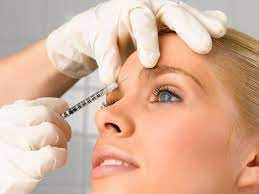views
Botox, widely recognized for its cosmetic benefits in reducing wrinkles, has also emerged as a powerful treatment for chronic migraines. If you're wondering can Botox help with migraines, the answer is yes—especially for individuals who experience debilitating headaches for 15 or more days each month. The FDA has approved Botox for the treatment of chronic migraine, and many patients report significant relief after consistent sessions. This therapeutic use of Botox Injections(حقن البوتوكس) involves precise injections into specific muscles to reduce migraine frequency and severity.
Understanding the Importance of Botox for Migraine Relief:
Migraines are more than just bad headaches—they are a neurological condition that can cause throbbing pain, nausea, sensitivity to light, and more. For many, these episodes disrupt daily life and productivity. Botox has become a life-changing option for those who don’t respond well to oral medications or prefer non-systemic therapies.
Why this treatment matters:
-
Reduces the frequency of chronic migraines
-
Provides long-lasting relief with regular sessions
-
Targets tension areas and pain triggers
-
Helps improve overall quality of life
Botox works by blocking the release of chemicals involved in pain transmission. By relaxing certain muscle groups, it prevents the activation of pain networks associated with migraine attacks.

How Botox Is Used to Treat Migraines?
The process of using Botox to treat migraines is very different from cosmetic injections. It targets muscles in the head and neck regions that are known to play a role in migraine development. The injections are delivered at multiple sites across these areas in small doses.
Key areas typically treated:
-
Forehead
-
Temples
-
Back of the head
-
Neck and shoulders
-
Bridge of the nose and upper back
These injections are repeated every 12 weeks. Over time, many patients see a reduction in both the intensity and number of migraine days per month.
Are There Risks to Consider?
Although Botox is generally considered safe, especially when administered correctly, there are potential risks like with any medical treatment. Most side effects are mild and temporary, but being informed can help you feel more confident before proceeding.
Possible risks include:
-
Mild pain or swelling at injection sites
-
Neck stiffness or soreness
-
Temporary muscle weakness
-
Flu-like symptoms
It’s important to follow all pre- and post-treatment care instructions. Staying upright for a few hours after the procedure and avoiding strenuous activity can minimize side effects.
Benefits of Using Botox for Migraines:
For those suffering from chronic migraines, Botox can offer relief that significantly improves day-to-day living. Unlike oral medications, which affect the entire body, Botox works locally—making it a targeted and often better-tolerated solution.
Benefits you can expect:
-
Fewer migraine days per month
-
Reduced need for pain medications
-
Less sensitivity to light and sound
-
Decreased nausea and other migraine-related symptoms
-
Improved ability to function at work and home
Patients often report that even if migraines are not entirely eliminated, they are milder and shorter in duration with Best Botox Injections(أفضل حقن البوتوكس) treatment.
FAQs About Botox for Migraines:
How do I know if I qualify for Botox treatment for migraines?
Botox is approved for people who suffer from chronic migraines, defined as 15 or more headache days per month, with at least 8 being migraine days.
Is the treatment painful?
The injections are relatively quick and typically cause only minor discomfort. Most people tolerate them well.
How soon can I expect results?
Some patients notice improvement within 2 to 3 weeks, but it may take up to 6 months (or two treatment cycles) for full results.
Will I need Botox forever?
Many people continue treatment long-term, but some may gradually taper off if their migraine patterns improve significantly.
Can I combine Botox with other treatments?
Yes, Botox can be used alongside other migraine treatments, including medication and lifestyle changes.
Conclusion:
So, can Botox help with migraines? Absolutely. It's a clinically backed, FDA-approved solution that provides relief to many who suffer from chronic migraine attacks. While it may not be a cure, Botox can significantly decrease both the number and intensity of headaches, allowing individuals to regain control over their lives. If migraines have taken over your daily routine, Botox could be the non-invasive relief option you’ve been looking for. Always ensure the treatment is administered by a trained professional to get the best and safest results.



Comments
0 comment